REFERENCE READING
THANKS TO LTC AND MRS. RWW (R), E/2/503/173 69-70 HERITAGE BN IS BACK ON TRACK WITH THE FLIPPING BOOK PROGRAM, WHICH ALLOWS US TO PRESENT DOCUMENTS IN AN MORE ACCESSABLE FORMAT.
Postwar, Corregidor, not surprisingly, became the subject of detailed study at the Advanced Officers Course at Ft. Benning and the Command and General Staff College at Ft. Leavenworth, KS.
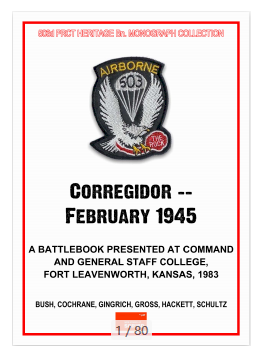
The transfer of the 503d PRCT to Gen. Eichelberger's command resulted in it being called in to "assist" the 185th Infantry Regiment which was finding the "mopping up" in Negros a much harder task than expected. Negros would become, ultimately, a much more difficult operation than Corregidor. Ultimately, the campaign would be largely overlooked by even the Army's Official Historian. It was perhaps the most grievous misuse of a paratroop unit in WWII. The Negros Journals are presented in five folders.
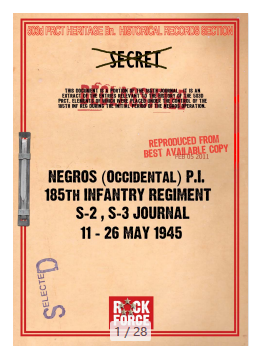
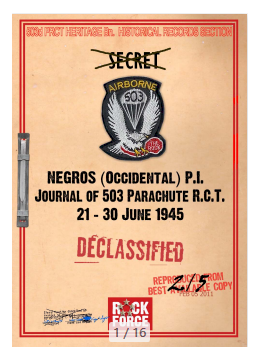

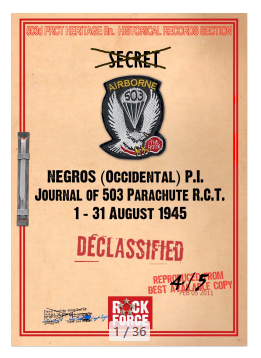
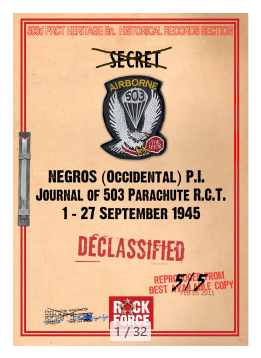
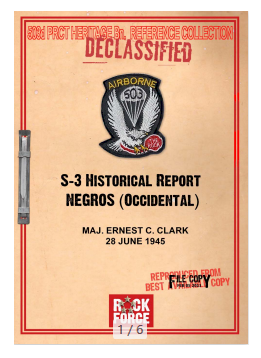
BATTLE OF MANILA
The Battle of Manila, probably more than any other battle of WWII, has suffered from the false narratives of post-war revisionism. This was not simply the result of Japanese reluctance to traverse their war crimes, but from the efforts of the US to use Japan as a facility for the 'police action' in Korea. The predominant revision was that the US had, by surrounding Manila, failed to afford an escape route for the Japanese to withdraw from the city, thereby causing damage and death which otherwise not have occurred. The secondary revision was to characterise the atrocities as " the Manila Naval Defence Force under the command of the Imperial Japanese Navy running amok." The third revision was that the damage to Manila was caused predominantly by "American Bombing" and indiscriminant artillery use.